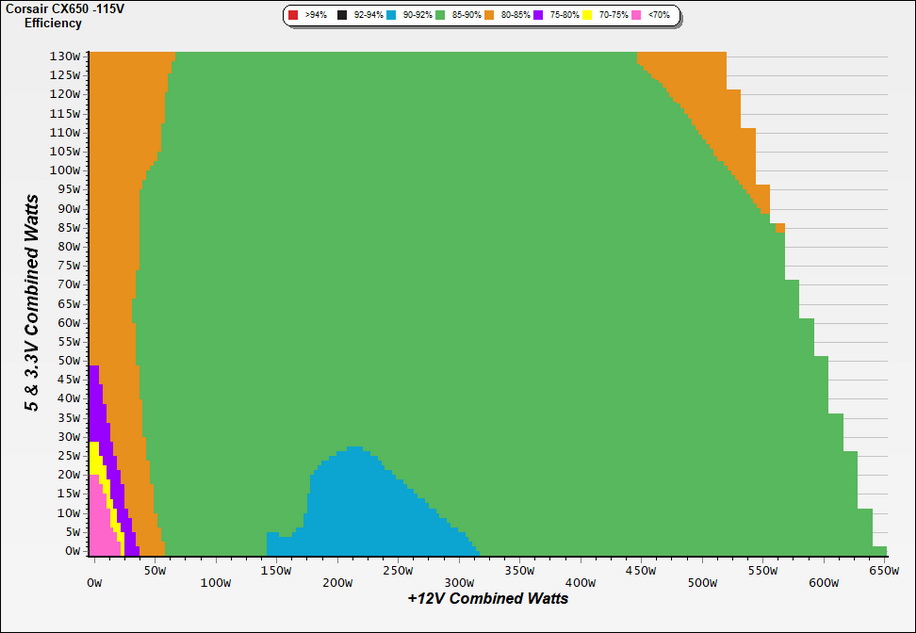Why you can trust Tom's Hardware
Protection Features
Check out our PSUs 101 article to learn more about PSU protection features.
|
Protection Features | |
|
OCP |
12V: 69A (127.78%), 11.908V |
|
OPP |
834.93W (128.45%) |
|
OTP |
✓ (95°C @ +12V heat sink) |
|
SCP |
12V: ✓ |
|
PWR_OK |
Accurate but lower than 16ms |
|
NLO |
✓ |
|
SIP |
Surge: MOV |
OCP at 12V is appropriately set, but this is not the case for the minor rails where OCP is set sky-high. OPP's triggering point is within the 130% range, so everything is okay, while OTP's setting is low, since this PSU is rated at 40 degrees Celsius for continuous max load delivery.
Leakage Current
In layman's terms, leakage current is the unwanted transfer of energy from one circuit to another. In power supplies, it is the current flowing from the primary side to the ground or the chassis, which in the majority of cases is connected to the ground.
The leakage current test is conducted at 110% of the DUT's rated voltage input (so for a 230-240V device, we should conduct the test with 253-264V input). The maximum acceptable limit of a leakage current is 3.5 mA.
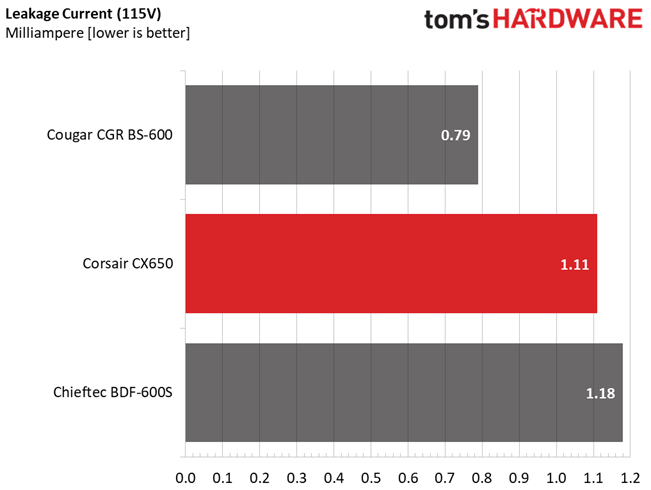
Leakage current is at low levels.
DC Power Sequencing
According to Intel’s most recent Power Supply Design Guide (revision 1.4), the +12V and 5V outputs must be equal to or greater than the 3.3V rail at all times. Unfortunately, Intel doesn't mention why it is so important to always keep the 3.3V rail's voltage lower than the levels of the other two outputs.

DC Power Sequencing Scope Shots
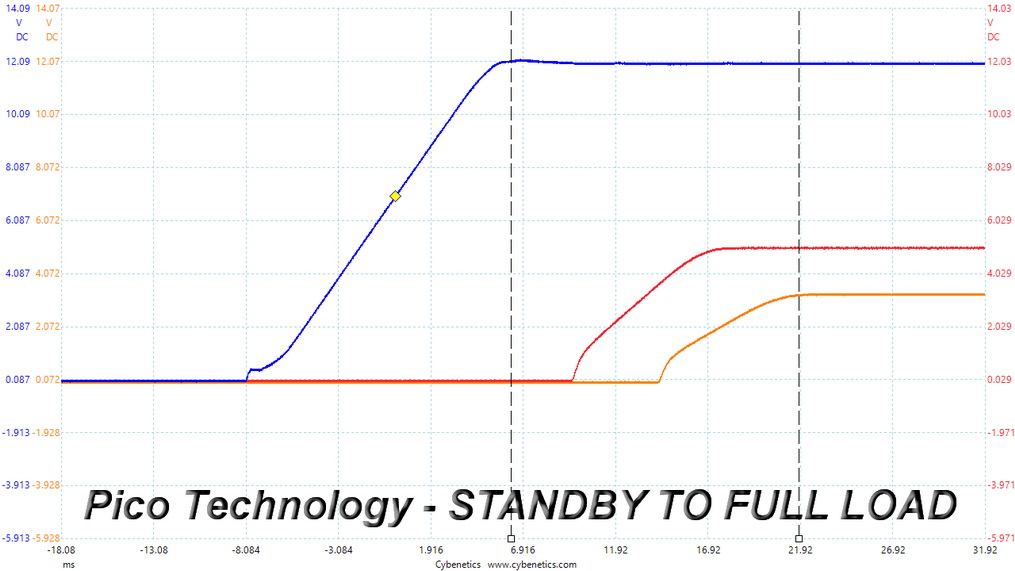
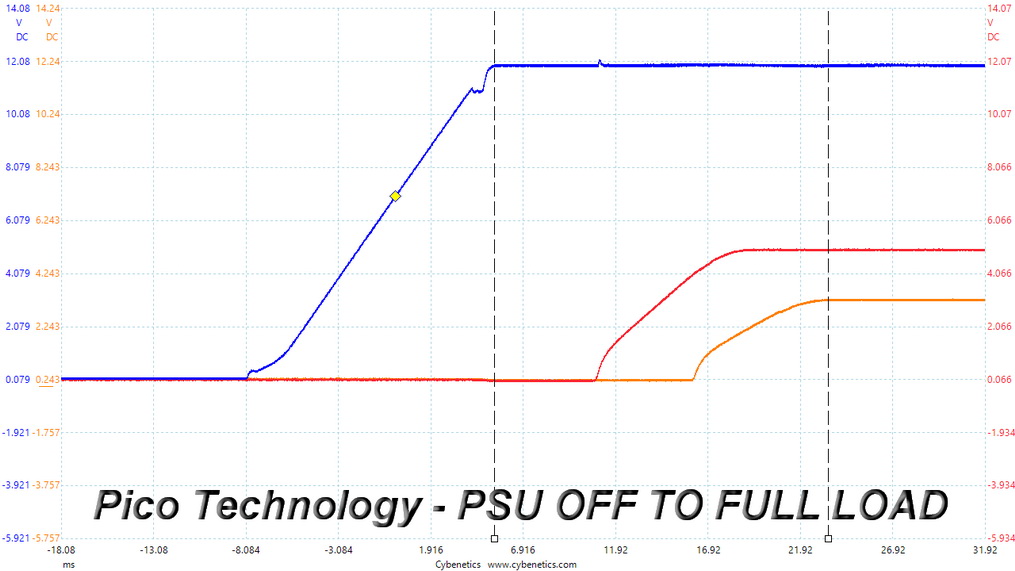
Everything rolls fine here since 3.3V rail is always at a lower level than the other two.
Get Tom's Hardware's best news and in-depth reviews, straight to your inbox.
Cross Load Tests
To generate the following charts, we set our loaders to auto mode through custom-made software before trying more than 25,000 possible load combinations with the +12V, 5V, and 3.3V rails. The deviations in each of the charts below are calculated by taking the nominal values of the rails (12V, 5V, and 3.3V) as point zero. The ambient temperature during testing was between 30 to 32 degrees Celsius (86 to 89.6 degrees Fahrenheit).
Load Regulation Charts
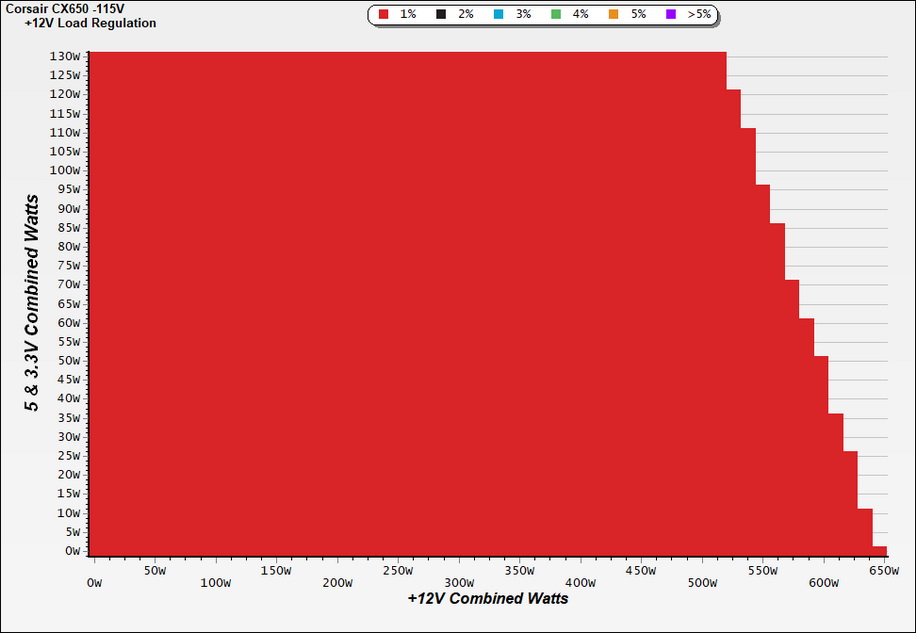
Load Regulation Charts
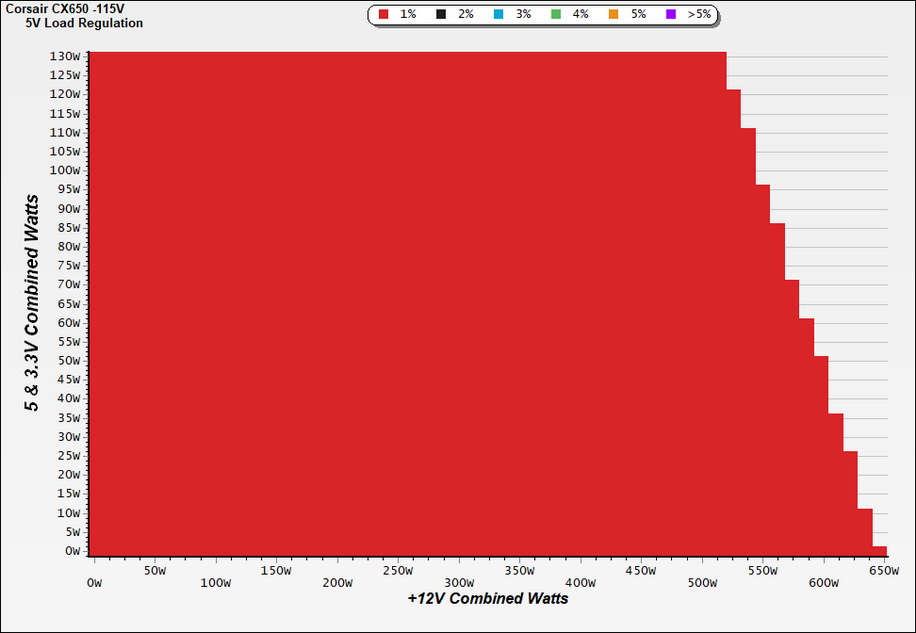
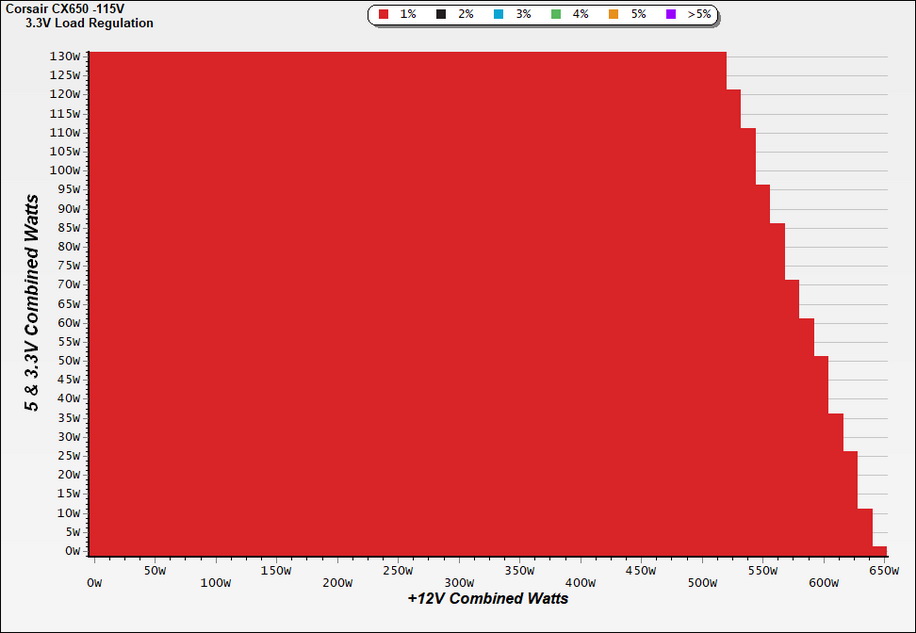
Efficiency Chart
Ripple Charts
The lower the power supply's ripple, the more stable the system will be and less stress will also be applied to its components.
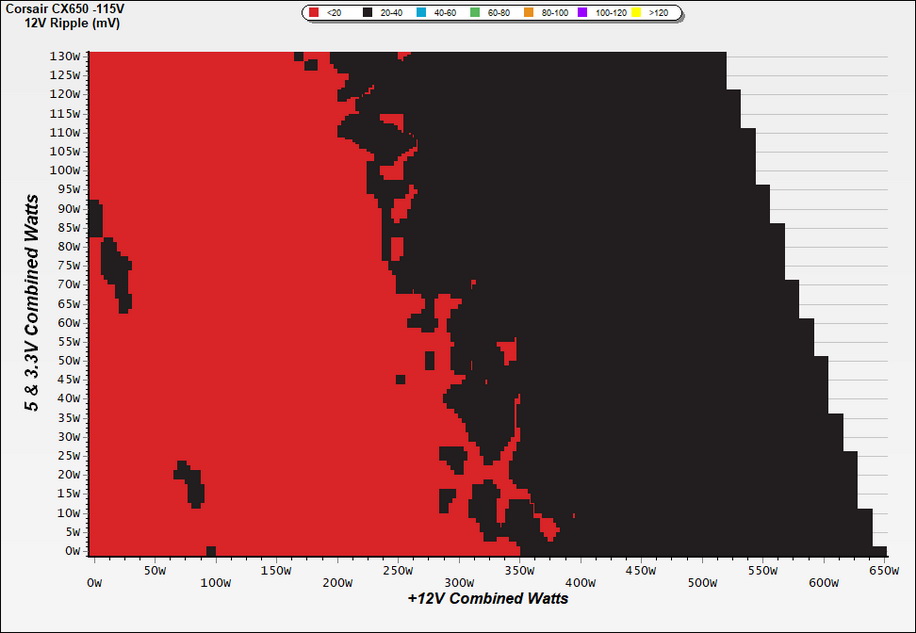
Ripple Suppression Charts
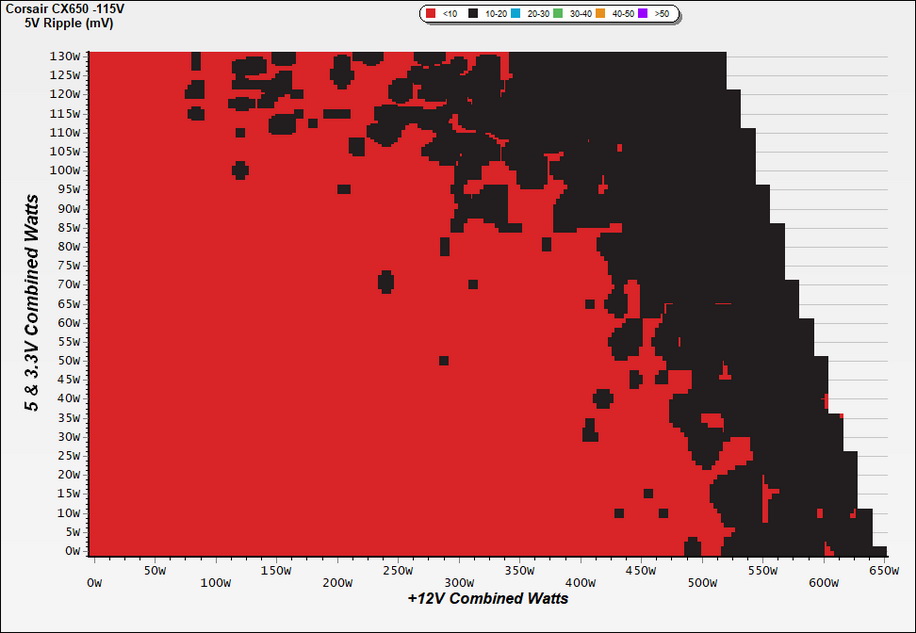
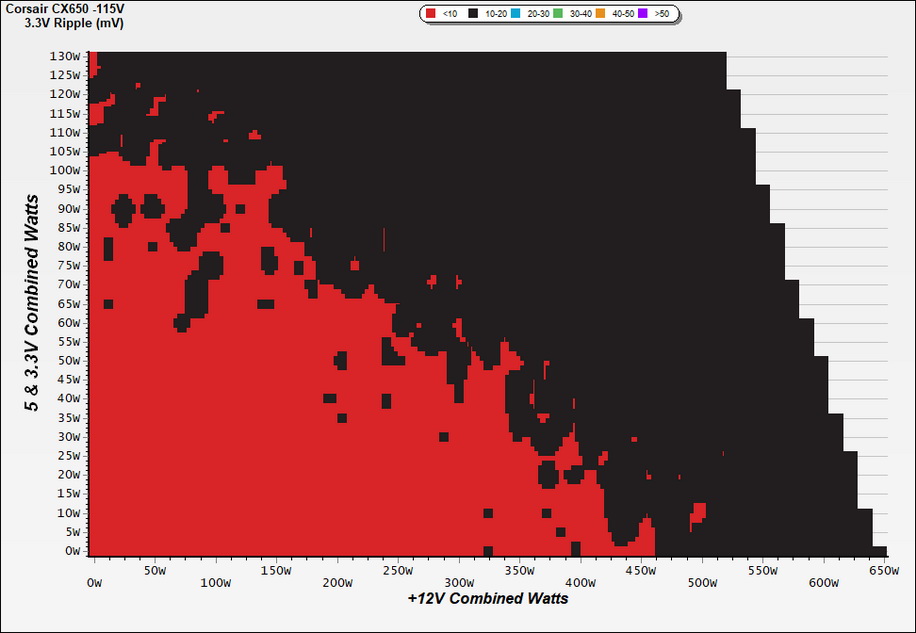
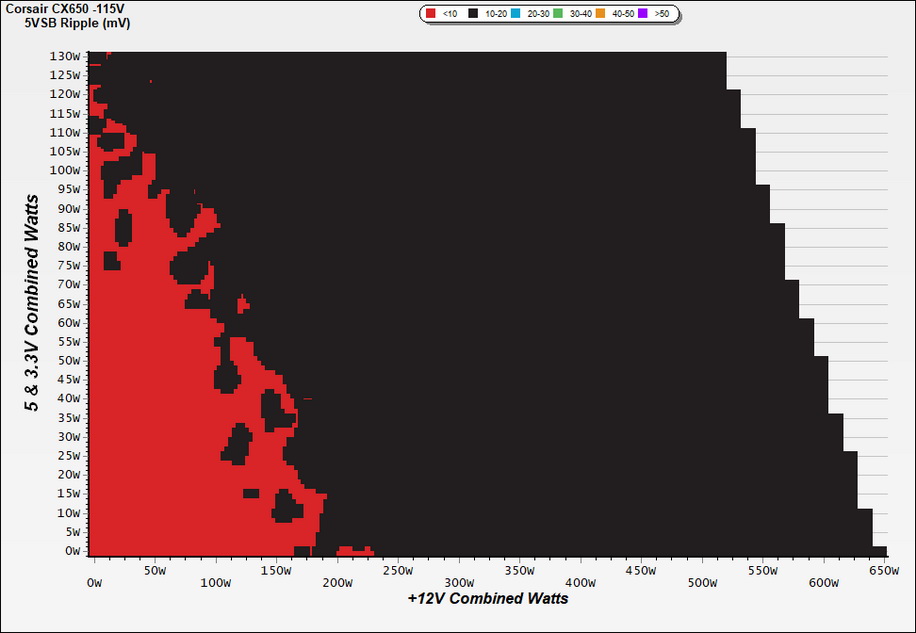
Infrared Images
We apply a half-load for 10 minutes with the PSU's top cover and cooling fan removed before taking photos with a modified FLIR E4 camera able to deliver an IR resolution of 320x240 (76,800 pixels).
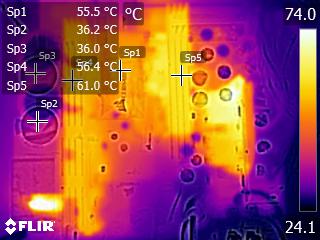
IR Images

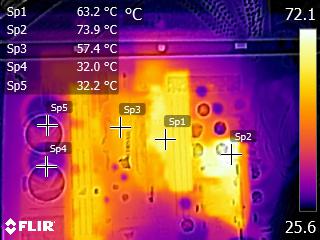
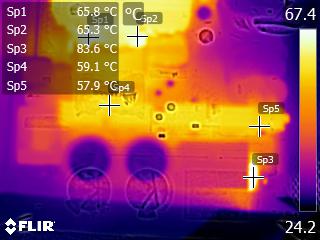
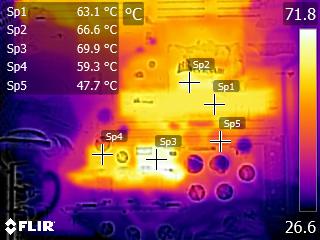
The hottest spots are on the secondary side, in the PCB that hosts the DC-DC converters. There are some electrolytic caps close to these converters. Ideally, there should be more clearance between the caps mentioned above and the VRMs, and there is free space on the PCB for this, which GW didn't exploit, unfortunately.
MORE: Best Power Supplies
MORE: How We Test Power Supplies
MORE: All Power Supply Content
Current page: Protection Features, DC Power Sequencing, Cross-Load Tests and Infrared Images
Prev Page Load Regulation, Hold-Up Time, Inrush Current, Efficiency and Noise Next Page Transient Response Tests, Timing Tests, Ripple Measurements and EMC Pre-Compliance Testing
Aris Mpitziopoulos is a contributing editor at Tom's Hardware, covering PSUs.
-
mdd1963 Lots of folks 'poo-poo' some of Corsair's PSU offerings, instead flocking to something w/Gold or Platinum in it'/s title, no matter the 150% price increase, and/or the 430W 'only' capacity...Reply
I've been happily using a Corsair 600 watt PSU (CX600) which cost me all of $55 or so in Feb 2017 if I recall correctly... ; never a stutter.
